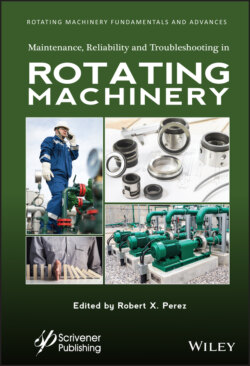Читать книгу Maintenance, Reliability and Troubleshooting in Rotating Machinery - Группа авторов - Страница 41
Critical Machine Events
ОглавлениеWithout historical lifecycle data, we cannot make objective decisions about machines. To determine a critical machine’s availability, we need to know how long it ran between outages and how long it took to make repairs. Therefore, we need a database that can capture life cycle events for all your critical machines.
Consider the life cycle of the hypothetical machine seen in Figure 2.7. At t1 the machine is started for the first time. The machine runs reliably from time t1 to t2 and fails. The machine is repaired from time t2 to t3 and then restarted at time t3. The machine runs from t3 to t4 and fails. The machine is repaired from time t4 to t5 and then restarted. The machine runs from t5 to t6 and fails at time t6. The machine is repaired from time t6 to t7 and then restarted.
All of these start-up and shutdown times should be captured in machine records. In addition to these times, you also need to record:
Repair or PM work scope performed during downtimes.
Denote of the outage was planned or unplanned.
Repair costs.
Root causes of unplanned work.
Losses incurred as a result of an unplanned outage. Losses can be related to production losses, demurrage, fines, etc.
If all this information is available, then the machine’s availability (Ao), MTBF, MTTR can be determined and trended.
Some other tools used to track critical machines are:
